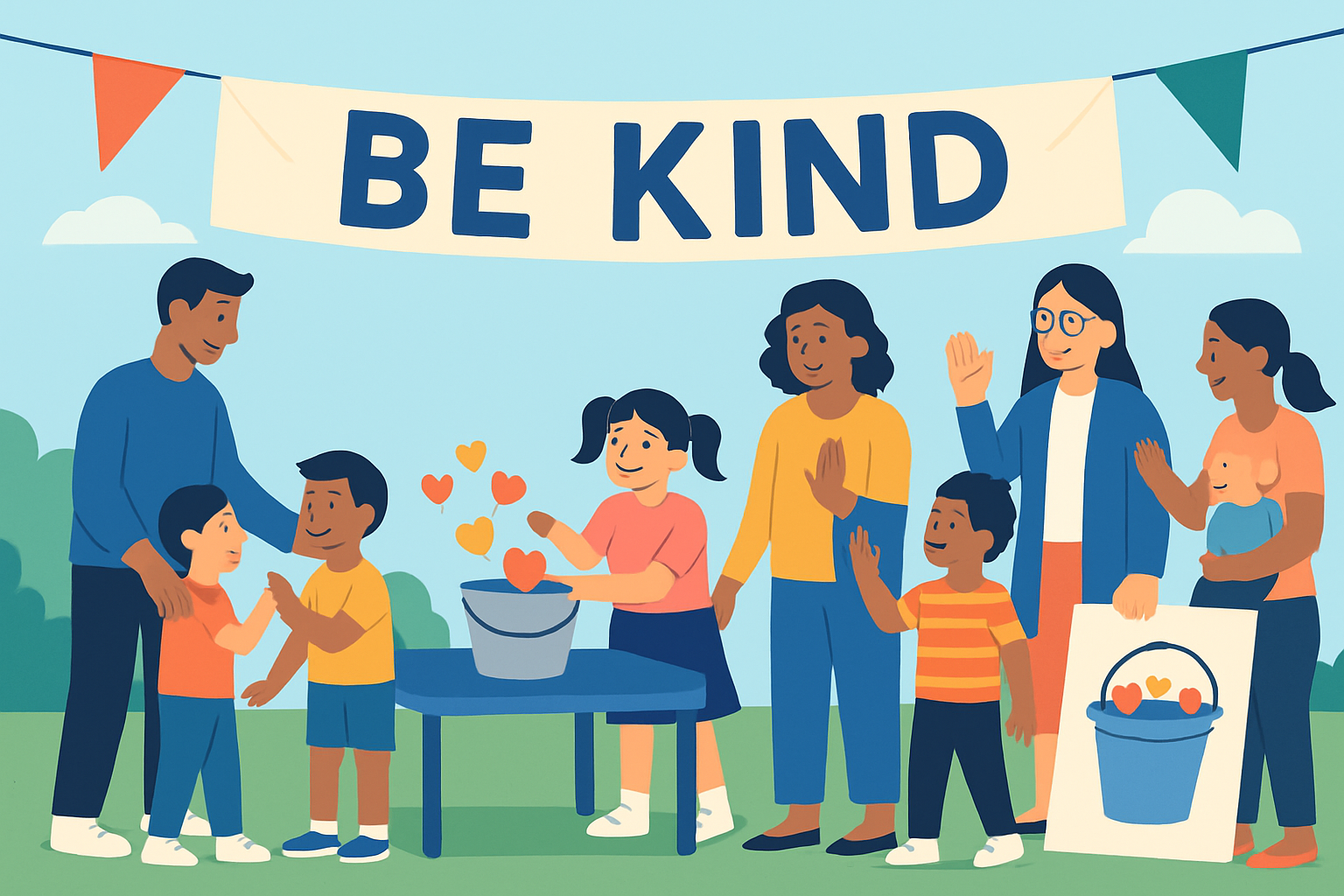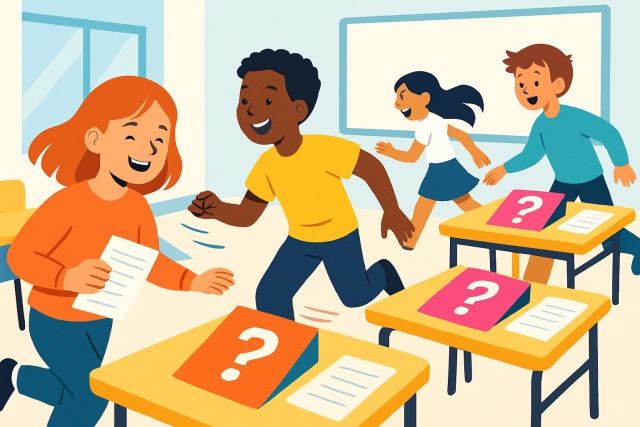Have You Filled a Bucket Today in Your Classroom?

The Have You Filled a Bucket Today concept is a well-loved metaphor and teaching tool that nudges kids toward kindness and empathy. It stems from Carol McCloud's children's book and paints a sweet picture of everyone carrying an invisible bucket symbolizing their emotional well-being. When you fill someone’s bucket, you do something kind or offer encouragement that lifts their spirits and creates a positive vibe. In classrooms, this idea shines by creating a supportive atmosphere where students notice how their actions affect others.
Getting to Know the ‘Have You Filled a Bucket Today?’ Idea A Simple Yet Powerful Concept Everyone Can Embrace
This metaphor helps students picture how their kindness and positive actions can lift emotional well-being—not only their own but also that of the individuals around them. Think of a full bucket as a symbol of happiness and security, while dipping into a bucket reflects moments of hurt feelings or negativity.
- Positive reinforcement gently encourages students to participate and engage in kind behaviors that truly uplift others.
- Emotional well-being often grows when acts of kindness are not only done but also noticed and sincerely appreciated.
- Building a sense of community is more than just a nice idea. It strengthens peer connections and creates a warm, supportive classroom atmosphere that everyone can experience.
- Boosting self-esteem gives students a satisfying feeling of being genuinely valued through positive interactions that quietly confirm their worth.
Advantages of Using Bucket Filling in the Classroom
There's something truly heartwarming about the bucket filling concept in the classroom. Not only does it promote kindness and empathy, but it also gently nudges students toward better social skills without the usual classroom fuss. In my experience, when kids focus on filling each other's buckets, the whole vibe shifts. Suddenly, respect and encouragement become the norm, rather than the exception. It’s a simple yet powerful approach that turns everyday interactions into opportunities for positivity, making the learning environment a much friendlier place to be. Plus, who doesn’t appreciate a little extra cheer during a long school day? It’s a win-win, really.
Bringing bucket filling into the classroom offers many benefits that really add up. When students find themselves in positive social circles, they often stay more focused and keep their motivation tank topped off. Socially speaking, bucket filling works wonders by reducing conflicts and gently nudging friendships to bloom. On the emotional front, it gives a nice boost to resilience and self-esteem, which is no small thing.
- Improved peer relationships usually lead to more cooperative and respectful interactions, which makes the classroom vibe friendlier.
- Reduced bullying often results from nurturing empathy and a genuine understanding among students, and this can truly change the entire dynamic.
- A stronger teacher-student connection helps encourage open communication and build trust, which is something every classroom aims to achieve.
- Encouraging inclusivity is not just good in theory; it helps make sure every single student feels truly recognized and valued.
- Emotional regulation skills tend to improve as students become better at tuning into their feelings and learning how to respond positively and constructively. This can be challenging, but it is definitely worth the effort.
A Practical Guide to Introducing Bucket Filling in Your Classroom
If you’re like me, you probably want something simple yet meaningful to lighten up your classroom vibe. Bucket filling is one of those sweet, little strategies that can make a big difference without needing a ton of effort. It’s about encouraging kindness and small acts that add up, like dropping coins into a piggy bank of goodwill. Stick with me, and I’ll walk you through how to introduce this idea in a way that clicks with your students and maybe even makes their day a bit brighter.
To weave bucket filling into your classroom culture, start by breaking down the metaphor in a way that really clicks with your students. Tell stories and toss in examples that bring the idea to life, making it more than just words on a page. Point out how everyone's actions ripple out—sometimes brightening someone’s day, other times maybe not so much.
Introduce the bucket metaphor with some down-to-earth stories or the original book to immediately grab the students' attention.
Bring in visual aids like eye-catching posters or a big bright classroom bucket so everyone can easily see what bucket-filling actions look like in real life.
Teach words tied to kindness, empathy and emotional awareness because these little gems really help students understand the big ideas behind the metaphor.
Set up daily or weekly check-ins where students can casually share how they have filled someone else's bucket. This is a nice way to keep the kindness momentum going.
Publicly recognize and celebrate those acts of kindness since a little cheer goes a long way in encouraging positive behavior.
Bring families and caregivers into the loop by explaining the bucket-filling concept and offering easy suggestions to keep that spirit alive at home.
Getting Your Classroom Materials Ready (and Actually Feeling Prepared)
Visual aids are a real game-changer when it comes to supporting bucket filling in your classroom. Bright colorful posters show buckets being topped off with kind words or actions and serve as constant friendly nudges for the kids. Setting up a bucket chart where students can track their positive behaviors encourages responsibility and invites reflection. Add some journaling prompts focused on daily emotions and acts of kindness and you get a richer understanding and a more heartfelt connection to the whole idea.
Daily and Weekly Activities to Keep Your Buckets Brimming
- Kick off each day with a little greeting ritual where students share positive affirmations, kind of like giving everyone a gentle boost to start on the right foot.
- Set up weekly compliment circles where peers openly offer kind words. It’s surprising how a few sincere words can really boost confidence.
- Carve out quiet moments for journaling, giving students the chance to reflect on how they or others helped fill each other's buckets throughout the day.
- Bring in peer recognition activities where students nominate friends for those thoughtful, bucket-filling gestures. It’s always nice to see kindness celebrated in real time.
- Introduce bucket filling games designed to encourage cooperation rather than competition because a little friendly teamwork never hurt anyone.
- Save some time for reflection where students can chat about how acts of kindness truly ripple through their classroom community.
Ways to Encourage Consistent Bucket Filling Habits That Stick
Encouraging students to consistently take part in bucket filling is really about nurturing a heartfelt sense of kindness, paired with a bit of well-timed positive reinforcement. Teachers set the tone not just through words but through their everyday actions, laying down clear classroom rules centered on respect. When peers chime in with recognition and support, it truly helps to cement these good habits.
- Use positive and supportive language that shines a light on thoughtful actions and genuine effort, making students feel truly seen.
- Clearly lay out classroom rules centered on respect and kindness, so everyone knows exactly what’s expected.
- Set up fun recognition programs like 'bucket fillers of the week' to celebrate those everyday heroes and their little victories.
- Share personal stories about kindness or learning moments. A simple anecdote can strengthen the bond between teacher and student.
- Encourage peer support programs where students honestly cheer each other on, creating a circle of motivation that feels real and heartfelt.
Tackling the Usual Hurdles When Putting Bucket Filling into Practice
Introducing bucket filling can be a bit of a tough nut to crack at the start. Some students might push back or feel a little skeptical, especially if they have been burned by negative social experiences in the past. Toss in inconsistent participation and cultural nuances in how kindness is expressed, and things can get a bit messier than expected. Keeping the momentum going over time usually requires a dash of creativity and a steady hand from educators.
"Building a positive classroom culture through bucket filling is definitely an ongoing journey that calls for a bit of flexibility and a whole lot of heart. When teachers lead by example with kindness and truly tune into their students’ unique needs, kindness naturally turns into the common language of the room — the kind of language that can genuinely transform the whole learning vibe." – Dr. Maya Patterson, Child Psychologist
Understanding How Bucket Filling Can Truly Brighten Up Your Classroom
Measuring the impact of bucket filling initiatives is key to understanding not just how well they work but also where there’s room to grow. Teachers often mix qualitative and quantitative methods. They keep a close eye on how students interact, gather anonymous surveys to get the real vibe of the emotional atmosphere, and track behavior changes over several weeks or months. It is common to see academic markers like participation, focus and attendance perk up when emotional support is genuinely in place. Plus, regular feedback from students offers valuable insights into the highs and lows of the process. This makes it easier to tweak practices and get the best possible outcomes.
| Category | Data Source | Indicators | Frequency of Assessment |
|---|---|---|---|
| Emotional Well-being | Observations, student surveys | Positive interactions with peers, students’ reported happiness levels (because who doesn’t notice the vibe in the room) | Monthly |
| Social Skills | Teacher logs, peer feedback | Levels of cooperation, instances of conflicts (the good, the bad, and the occasional messy) | Every two weeks |
| Behavioral Changes | Disciplinary records, observations | Decrease in negative behaviors, more active participation (signs that things are slowly but surely looking up) | Weekly |
| Academic Engagement | Attendance data, classroom participation | Improved attendance, greater involvement in class (those lightbulb moments we all root for) | Quarterly |
| Student Feedback | Focus groups, questionnaires | Students’ views on the classroom environment (straight from the horse’s mouth, so to speak) | Monthly |
Taking Bucket Filling Beyond the Classroom Spreading Kindness Far and Wide
Bucket filling needs to spill over from the classroom and reach families and the wider school community. As you ask yourself 'have you filled a bucket today', remember that sharing the concept through newsletters and community events helps nurture a lasting culture of kindness.
- Send out family newsletters that break down the idea of bucket filling in plain English and include some easy activities to try at home because who couldn’t use a little more kindness around the dinner table?
- Set up community service projects where students don’t just learn about kindness but roll up their sleeves and spread goodwill beyond the school walls.
- Organize school-wide events that shine a spotlight on kindness and make it a celebration everyone wants to be part of no matter their age or background.
- Offer parent workshops with practical tips on nurturing empathy at home—parenting isn’t a walk in the park and a little guidance helps.
- Launch peer mentoring programs that pair older students with younger ones and foster supportive friendships helping everyone feel seen and supported.
Handy Resources and Materials to Boost Your Bucket Filling Adventures
- Carol McCloud's book "Have You Filled a Bucket Today?" is the go-to resource that really gets the whole idea rolling.
- Lesson plans crafted carefully for different grade levels, making sure the concept clicks with kids regardless of their age.
- Printable posters and charts that serve as handy visual reminders, gently nudging everyone to keep up the bucket-filling habit in the classroom.
- Digital tools and apps designed not just to track kind acts, but to inspire a little thoughtful reflection along the way.
- Educational videos packed with lively animations that manage to capture students’ attention and bring the message to life.
- Professional development courses aimed at teachers eager to deepen their understanding and sharpen how they weave this helpful practice into their daily routine.







